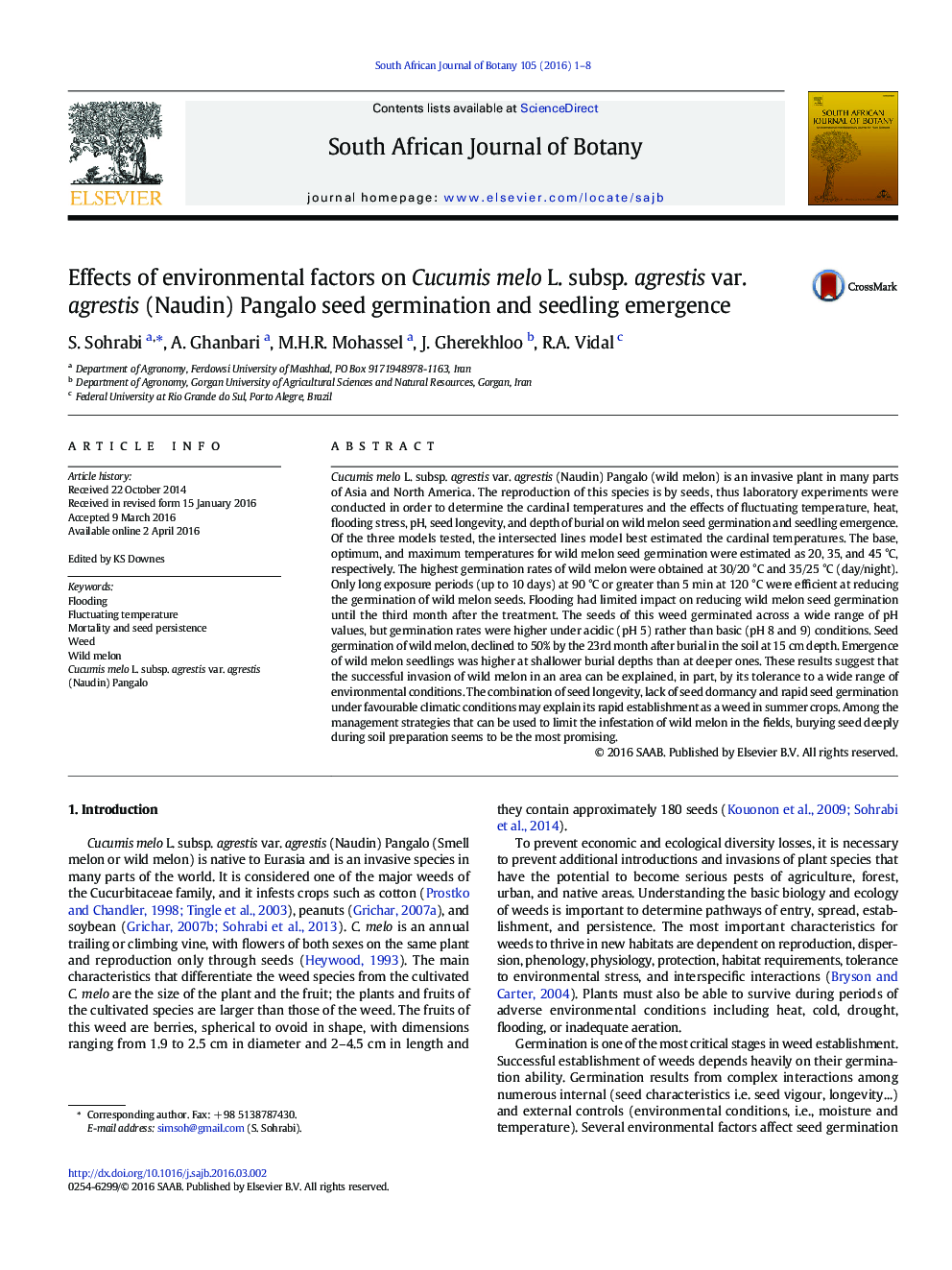| کد مقاله | کد نشریه | سال انتشار | مقاله انگلیسی | نسخه تمام متن |
|---|---|---|---|---|
| 4520096 | 1625153 | 2016 | 8 صفحه PDF | دانلود رایگان |

• The base, optimum, and maximum temperatures for C. melo seed germination are 20, 35, and 45 °C, respectively.
• The mortality of C. melo seeds at high temperatures depends on the temperature and duration of exposure.
• Seed burial at 15 cm depth in the soil for 23 months resulted in a 50% decline in subsequent germination.
• Lack of seed dormancy, and high germination percentage under favorable conditions is responsible for rapid weed establishment.
Cucumis melo L. subsp. agrestis var. agrestis (Naudin) Pangalo (wild melon) is an invasive plant in many parts of Asia and North America. The reproduction of this species is by seeds, thus laboratory experiments were conducted in order to determine the cardinal temperatures and the effects of fluctuating temperature, heat, flooding stress, pH, seed longevity, and depth of burial on wild melon seed germination and seedling emergence. Of the three models tested, the intersected lines model best estimated the cardinal temperatures. The base, optimum, and maximum temperatures for wild melon seed germination were estimated as 20, 35, and 45 °C, respectively. The highest germination rates of wild melon were obtained at 30/20 °C and 35/25 °C (day/night). Only long exposure periods (up to 10 days) at 90 °C or greater than 5 min at 120 °C were efficient at reducing the germination of wild melon seeds. Flooding had limited impact on reducing wild melon seed germination until the third month after the treatment. The seeds of this weed germinated across a wide range of pH values, but germination rates were higher under acidic (pH 5) rather than basic (pH 8 and 9) conditions. Seed germination of wild melon, declined to 50% by the 23rd month after burial in the soil at 15 cm depth. Emergence of wild melon seedlings was higher at shallower burial depths than at deeper ones. These results suggest that the successful invasion of wild melon in an area can be explained, in part, by its tolerance to a wide range of environmental conditions. The combination of seed longevity, lack of seed dormancy and rapid seed germination under favourable climatic conditions may explain its rapid establishment as a weed in summer crops. Among the management strategies that can be used to limit the infestation of wild melon in the fields, burying seed deeply during soil preparation seems to be the most promising.
Journal: South African Journal of Botany - Volume 105, July 2016, Pages 1–8